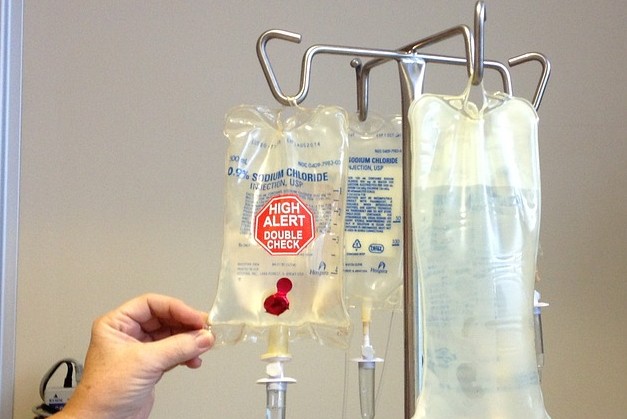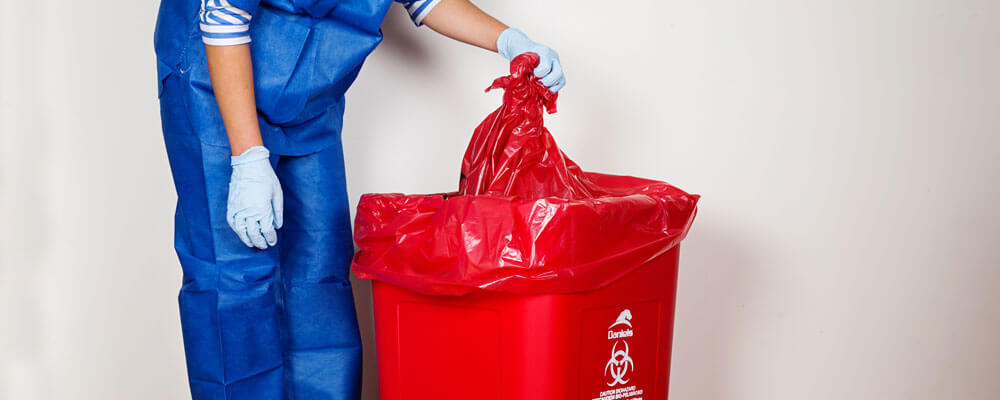Safeguarding Wellness: Expert Medical Waste Removal Services for a Clean Atmosphere
Safeguarding Wellness: Expert Medical Waste Removal Services for a Clean Atmosphere
Blog Article
Keep Ahead of Regulations: Expert Suggestions on Medical Waste Disposal
In a world where the health care market is frequently progressing, it is crucial for clinical centers to remain in advance of regulations when it involves the proper disposal of medical waste. With strict guidelines and regular governing changes, it can be challenging to navigate the complexities of this process. With expert guidance, centers can ensure compliance and mitigate risks associated with improper waste disposal. From comprehending the different classifications of medical waste to implementing the right collection and segregation methods, this discussion will certainly supply workable suggestions and important insights to aid centers remain in advance of policies in the ever-changing landscape of medical waste disposal.
Recognizing Clinical Waste Categories
Understanding medical waste classifications is vital for appropriate disposal and management in healthcare centers. Clinical waste describes any kind of waste generated by health care tasks that may position a hazard to public wellness or the atmosphere. It is crucial to categorize medical waste properly to guarantee its safe handling, transport, disposal, and treatment.
There are a number of categories of medical waste that health care centers need to be acquainted with. The most typical categories consist of transmittable waste, pathological waste, sharps waste, pharmaceutical waste, and chemical waste. Each group has details guidelines and regulations for its appropriate administration and disposal.
Pathological waste refers to human tissues, body organs, or body parts that require unique handling and disposal. Pharmaceutical waste consists of ended, unused, or contaminated medicines that require mindful handling and disposal.
Remaining Up-To-Date With Regulatory Modifications
Staying present with governing adjustments is crucial for medical care centers to make certain conformity and correct administration of clinical garbage disposal. medical waste removal. With guidelines constantly developing, it is necessary for healthcare centers to remain updated to avoid charges, penalties, and potential harm to the setting and public wellness
To remain in advance of regulatory modifications, health care centers need to establish a system for surveillance and monitoring updates. This can be done by registering for regulative e-newsletters, participating in workshops and conferences, and actively participating in market associations. In addition, centers must designate an employee or team accountable for remaining educated and distributing info to appropriate stakeholders.
Normal interaction with governing agencies is also vital. Health care centers should establish partnerships with regional, state, and federal agencies to ensure they understand any type of modifications in guidelines that may affect their waste administration practices. This can be done with routine conferences, participation in public comment durations, and positive involvement with regulatory firms.
Furthermore, medical care centers need to consider partnering with waste monitoring business that concentrate on clinical waste disposal (medical waste disposal services with WasteX). These firms are frequently well-versed in the most recent regulations and can offer guidance and assistance to ensure compliance
Applying Proper Collection and Segregation Methods
To properly handle medical garbage disposal, healthcare facilities need to establish correct collection and segregation methods according to regulatory guidelines. Implementing these approaches makes certain the safe handling and disposal of possibly unsafe materials, shields the environment, and lessens the threat of infections and injuries to medical care employees and the basic public.
Correct collection and segregation approaches entail the usage of assigned containers and labeling systems. Healthcare facilities must offer clearly classified containers for various types of clinical waste, such as sharps, contagious waste, pharmaceutical waste, and non-hazardous waste. find more These containers ought to be color-coded and plainly significant to avoid complication and advertise very easy recognition.
Additionally, health care centers ought to educate their personnel on the appropriate procedures for collecting and segregating medical waste. This consists of enlightening them on the different kinds of waste, the suitable containers to utilize, and the value of adhering to guidelines and standards. Regular training sessions and refresher course training courses need to be performed to guarantee that employee remain current on finest practices.
Furthermore, healthcare centers must develop a system for normal collection and disposal of clinical waste. This might entail partnering with qualified waste management firms that specialize in medical garbage disposal. These companies will make certain that the gathered waste is transported and thrown away in conformity with governing needs.
Selecting the Right Disposal Techniques

Incineration is among one of the most reliable and common techniques for disposing of certain kinds of medical waste, such as pathological waste and sharps. It involves the controlled burning of waste at heats, minimizing it to ash. Nonetheless, incineration can launch harmful pollutants right into the air and contribute to air pollution.

Chemical treatment entails the use of chemicals to counteract the waste and sanitize. Microwave treatment makes use of microwave energy to warm and decontaminate the waste.
Guaranteeing Conformity Via Paperwork and Training
After very carefully taking into consideration the suitable disposal approaches for medical waste, healthcare centers should ensure conformity with regulations and decrease environmental effect by executing reliable documents and training procedures. This action is critical in preserving a sustainable and risk-free environment for both medical care workers and the public.

Training is just as important in making certain conformity with policies. Health care employees who manage clinical waste should receive ideal training on waste segregation, managing, and disposal procedures. This training ought to cover topics such as the appropriate use individual protective equipment, identification of various kinds of waste, and the correct disposal methods for every waste classification. By providing comprehensive training, healthcare centers can encourage their team to make educated choices and reduce the threat of improper waste disposal.
Conclusion
In conclusion, remaining in advance of guidelines in clinical waste disposal is critical for healthcare facilities. medical waste removal. Understanding the different groups of clinical waste, remaining upgraded with governing modifications, carrying out appropriate collection and segregation methods, choosing the appropriate disposal techniques, and making sure compliance through documents and training are all essential actions. By complying with these guidelines, healthcare companies can successfully get rid of and handle of medical waste in a secure and liable manner
From understanding the various classifications of medical waste to implementing the appropriate collection and partition methods, this discussion will certainly supply actionable ideas and valuable understandings to help centers remain ahead of guidelines in the ever-changing landscape of clinical waste disposal. - medical waste disposal services with WasteX
The most typical groups consist of infectious waste, pathological waste, sharps waste, pharmaceutical waste, and chemical waste. Health care facilities need to give plainly labeled containers for different types of medical waste, such as sharps, contagious waste, pharmaceutical waste, and non-hazardous waste. Health care centers must develop a comprehensive system to record and track all aspects of medical waste disposal, including types of waste generated, quantities, and disposal methods made use of. Healthcare employees that handle medical waste should receive important link appropriate training on waste segregation, dealing with, and disposal procedures.
Report this page